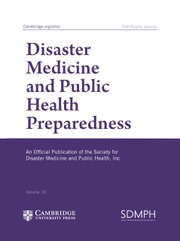No CrossRef data available.
Article contents
Joining Hands to Manage Transboundary Crises: A Comparative Evaluation of Policy Collaboration for Epidemic Prevention in China during SARS and COVID-19
Published online by Cambridge University Press: 02 December 2024
Abstract
Increasing transboundary crises necessitate the development of crisis management capabilities that transcend boundaries. In such situations, inter-governmental and cross-functional collaboration has become a common practice to address the complexities of governance challenges. This study employs Social Network Analysis to examine the structure, function, and evolution of policy collaboration networks in China in response to COVID-19 and SARS. Since the SARS outbreak, China has embraced a collaborative governance approach, considering the transboundary nature of COVID-19. This approach has led to the involvement of numerous specialized organizations engaged in economic and social development, contributing to the establishment of a larger and more loosely connected collaboration network. While the health department bears the primary responsibility for coordinating public health emergency management, diverse organizations with social governance and economic management functions have also emerged as key actors, providing crucial anti-epidemic information, knowledge, and resources to address this significant cross-border crisis.
- Type
- Policy Analysis
- Information
- Copyright
- © The Author(s), 2024. Published by Cambridge University Press on behalf of Society for Disaster Medicine and Public Health, Inc


